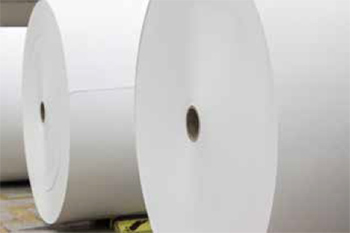India’s first modern paper mill was set up in 1832 at Seerampur, West Bengal using the mechanized process for paper making. Since then, the Industry has seen two distinct phases of development. Before liberalization of economy, the sector was operating under a controlled regimen where the market was essentially driven by by local demand and controlled prices as well as production. Even then, the industry, driven by a young nation of a knowledge based growth continued to expand and grow in size and volume to clock a CAGR of almost 8% across almost a decade. After delicencing, the growth rate for some time exhibited a 10% growth. However, at this time, the industry started to face problems due to raw material availability causing the growth rate to slow down. In the mean time, many agro based mill shifted to use of recovered paper for paper making.
In the last three to four years, the Indian paper industry has exhibited a CAGR of about 5% . It is a de-licensed industry where 100% FDI is allowed on the automatic route. In 2019-20, there were more than 850 paper units with an installed capacity of nearly 27.15 million tonne, out of which around 526 mills were in operation with a capacity of approximately 23.64 million tonnes. The estimated production of paper and paper board in the said period was about 20.61 million tonne and consumption stood at 22.06 million tonnes. During 2019-20, a total of 3.54 million tonne of paper, paperboard, and newsprint was imported, In India the per capita consumption of paper is about 16 kg, which is lower than the world average of around 53 kg. It is estimated that increase in consumption by 1 kg per capita would lead to an increase in demand of 1.36 million tonne. The estimated turnover of the industry is INR 70,000 crore (domestic market size of INR 80,000 crore) and its contribution to the exchequer is around INR 5,000 crore. The industry provides direct employment to more than 400,000 persons, and indirectly to around 1.5 million.

STRUCTURE OF PAPER INDUSTRY
The Indian paper industry is highly fragmented consisting of small, medium, and large paper mills having a capacity ranging from 5 to 1650 tonne per day. Only about 10% of the total production is contributed by top five players as against over 75% in other Asian countries such as Indonesia. JK Paper, ITC, TNPL, SPB, APPM, West Coast Paper Mill, Century Paper Mills & N. R Aggarwal Group, are the major players in the country. In total production, wood-based mills share is around 18% (4.20 million tons) agro-residues based is 9% (1.66 Million tons) and recovered fibre- based mills share is 73% (14.75 Million Tons). The domestic paper sector produces all the main varieties of paper that are in demand in the market, viz. writing and printing (36%), packaging grade paper (58%), newsprint (6%), and specialty paper (1%).CHALLENGES AND PROSPECTS
The pulp and paper industry in India is facing several challenges. The foremost is augmenting the domestic availability of wood-based raw material in a sustainable manner and developing new technologies to help economize the use of inputs, energy, and water consumption, in particular. Besides, there is a need to cut carbon emissions and recycle the by-products generated in the manufacture of paper for environmental performance. The energy consumed, water utilized, and environmental performance depend on the practices and the technologies employed. Second, given the large diversity in terms of capacity and technology there is both a need to upgrade the technology and scale of operations to improve the competitiveness. Third, new sources of demand need to be tapped such as eco-friendly packaging paper. Forth low recovery of waste paper in the country, which leads to industry more inclined towards imported waste paper. And during the national pandemic era, it has been experienced that because of low recovery of domestic waste paper, industry stakeholders had to import more quantity of waste paper from the international market on higher prices (prices of waste paper surged because of shortage of containers and low recovery of domestic waste paper).
This portal has been prepared for assisting the paper manufacturers, Technology Suppliers, consumers, Regulatory bodies and Research Institutions through a common platform with following objectives:
- To disseminate the latest trends and technologies related to energy conservation, water reduction, productivity enhancement, and environmental performance improvement.
- Facilitate sharing of best practices amongst Indian pulp and paper mills
- Involving all stakeholders in the process related to ‘Make Indian pulp and paper industry world class’
- Sharing the progress made and the benefits achieved through the world class paper plant activities
